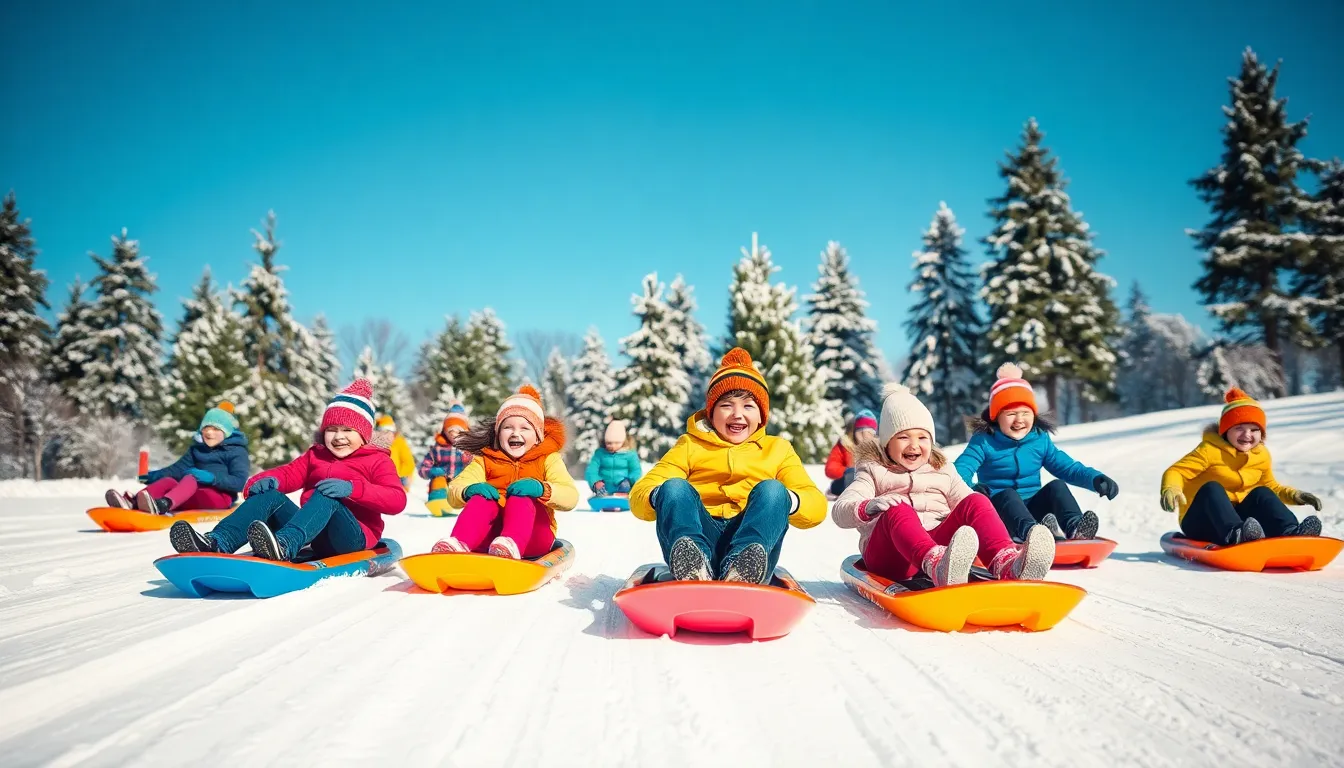Table of Contents
ToggleHave you ever been in a snowball fight so epic that you thought, “You know what would make this even better? Slides at breakneck speeds.” Welcome to the world of sledding, or as the cool kids call it, sledadora. This article is your one-stop-shop for everything you need to know about this thrilling winter activity, from its history to gear and even where in the world you should go sledding. Let’s immerse, shall we?
Sledadora

Sledding has a rich history that goes back several centuries. It started as a practical means of transportation in snowy regions. In fact, the earliest sleds date back to 5000 BC, primarily used in regions like Siberia. As time marched on, sledding transformed from a necessity into a recreational activity.
By the 19th century, sledding had gained popularity as a sport, particularly in the snowy terrains of Europe and North America. People were no longer content with just moving things around: they wanted to race, flip, and take thrilling runs down snowy hills. Fast forward to today, and sledding has become a recognized sport with various competitions and events held worldwide.
Types of Sledding Sports
Sledding isn’t just one monolithic term: it’s vibrant and diverse. Here’s a glimpse into the exhilarating types of sledding sports available:
1. Luge
Characterized by individual racers going headfirst while lying on their backs, luge is as daring as it gets.
2. Bobsleigh
Teamwork takes center stage here. In bobsleigh, teams of two to four players make thrilling runs while navigating twists and turns.
3. Skeleton
Similar to luge but more extreme, skeleton involves racing down the track headfirst, but unlike luge, athletes are positioned face-down.
4. Sledging (or simply Sledding)
Think family fun. This is the version most people are familiar with, involving those classic sleds you took down your neighborhood hill.
Essential Gear for Sledding Adventures
Nothing ruins the fun faster than being unprepared for a day of sledding. Here’s what you need:
- Sled: Whether it’s a toboggan, inflatable tube, or a classic wooden sled, pick one that suits your style.
- Warm Clothing: Layering is key. Invest in waterproof jackets, thermal gloves, and boots.
- Helmets: Seriously, no one looks cool with a concussion.
- Goggles: Protect those peepers from wind and snow.
- Winter Insurance (optional): Just in case your adventures go south: really, it’s worth considering.
Safety Tips for Sledding Enthusiasts
Sledding is thrilling, but safety should be a top priority. Here are some crucial tips to keep in mind:
- Choose the Right Hill: Avoid busy streets and icy areas. Opt for designated sledding hills.
- Check the Weather: Cold is fun, hypothermia is not.
- Go One at a Time: Tackle those hills solo to keep collisions at bay.
- Wear a Helmet: You might feel silly, but keep that noggin safe.
- Avoid Obstacles: Trees, rocks, and other riders can be dangerous. Choose clear paths.
Top Sledding Locations Around the World
If you’re a sledding enthusiast, you’ll want to hit these hotspots:
- Whistler, Canada: Known for its stunning terrain and top-tier facilities, it’s a haven for sledders.
- Aspen, Colorado: Offering varied runs, this picturesque locale combines luxury travel with snowy thrills.
- Garmisch-Partenkirchen, Germany: Known for its Olympic runs, it’s where sledding meets competitive spirit.
- Zermatt, Switzerland: Jaw-dropping views accompany exhilarating runs.
The Future of Sledding Sports
What’s on the horizon for sledding? Technological advancements are stepping into the sport’s realm. Think artificial intelligence for training, smart sleds that can track speed and routes, and interactive experiences for families. The rise of eco-friendly sledding gear is another game-changer. Sustainability is in, and as snowy sports expand, it’s exciting to see how they’ll adapt.




